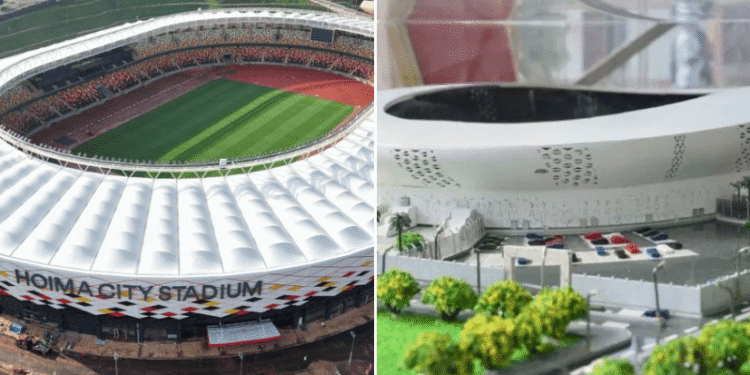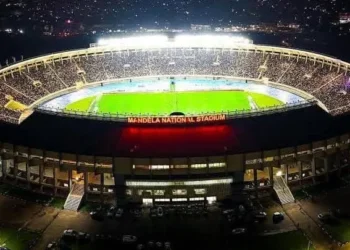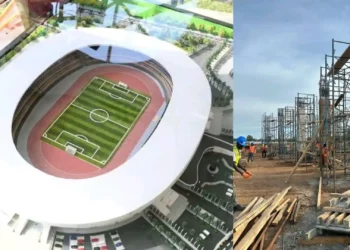Uganda is in the middle of a major sports transformation. For the first time in its history, the country is building two international-standard stadiums almost at the same time. The Hoima National Stadium in western Uganda and the John Akii-Bua Stadium in Lira are set to change how the country hosts sports and international tournaments. Both are expected to be ready before Uganda co-hosts the 2027 Africa Cup of Nations (AFCON) with Kenya and Tanzania.
Hoima National Stadium – A Western Giant
Construction of the Hoima National Stadium started in 2024 in Mparo Division, Hoima City. The project is being handled by Turkey’s Summa Construction Company, which has previously built stadiums in Rwanda and Senegal.
The stadium will seat about 20,000 fans and is estimated to cost Shs 484 billion (about US$131 million). It will have football pitches, an athletics track, modern dressing rooms, and spectator facilities. Work is expected to finish by the end of 2025, making it one of Uganda’s main venues for AFCON.
Akii-Bua Stadium – Honoring a Legend
In the north, Lira City is home to the John Akii-Bua Stadium, named after Uganda’s first Olympic gold medallist. The government signed the contract with Egyptian builders in December 2024, and construction began in January 2025.
The project will also host 20,000 seats and cost about Shs 470 billion (US$129 million). Unlike Hoima, Akii-Bua will be a multi-sports complex. It will feature an 8-lane athletics track, an indoor sports arena with 2,000 seats, a semi-Olympic swimming pool, courts for basketball, netball, volleyball and badminton, and even hostel facilities for athletes.
The work is scheduled to last 20 months, which means the stadium should be ready by August 2026.
Why These Stadiums Matter
For many years, Uganda has struggled to host major football events because of poor stadium facilities. The 2027 AFCON has given the country a deadline and a reason to invest heavily in sports infrastructure.
These projects also go beyond football. By building in Hoima and Lira, government is spreading investment to different regions, creating jobs, boosting local businesses, and giving young athletes modern grounds to train on.
Challenges and Hopes
Both projects face the usual risks of delays, high costs, and supply challenges. But with the clock ticking toward AFCON 2027, the government and contractors are under pressure to deliver on time.
If completed as planned, Uganda will have two modern stadiums for the first time in its history. For sports fans, this is not just about football—it is about lifting Uganda’s image on the world stage, honoring its heroes like Akii-Bua, and opening new opportunities for the next generation of athletes.










